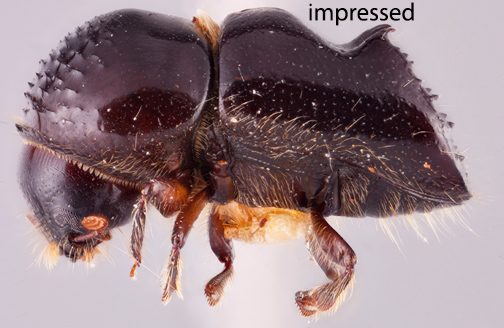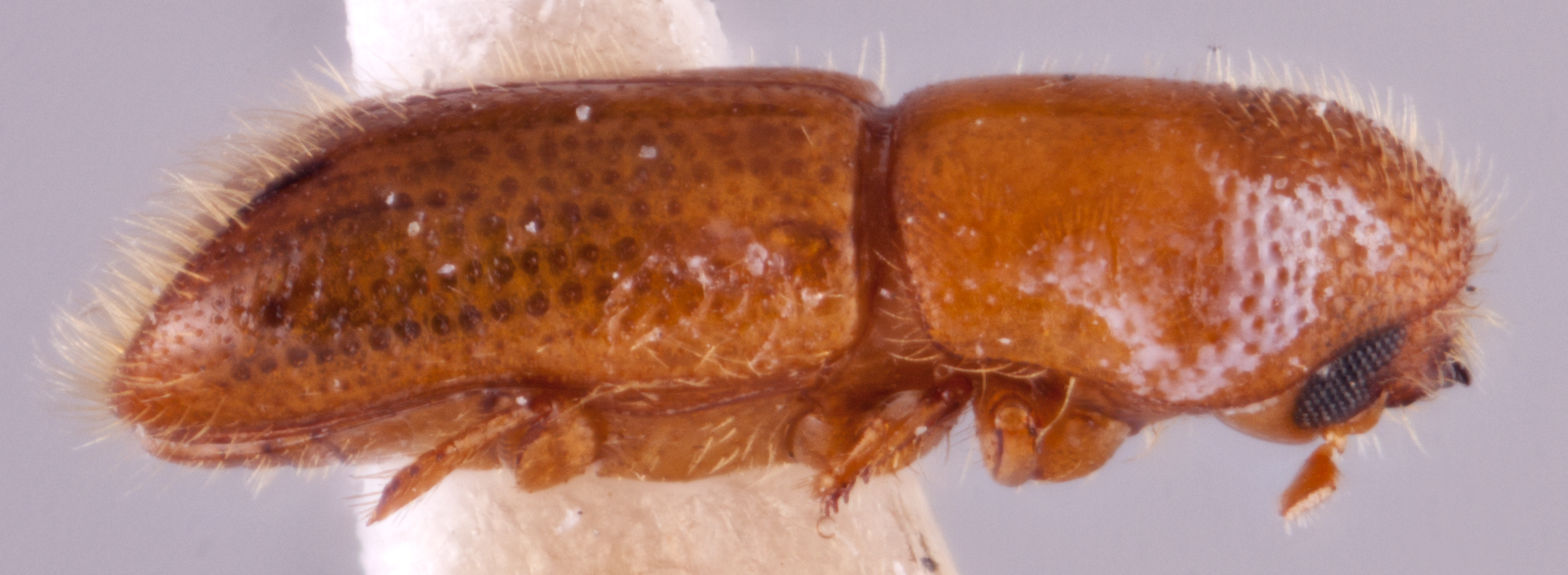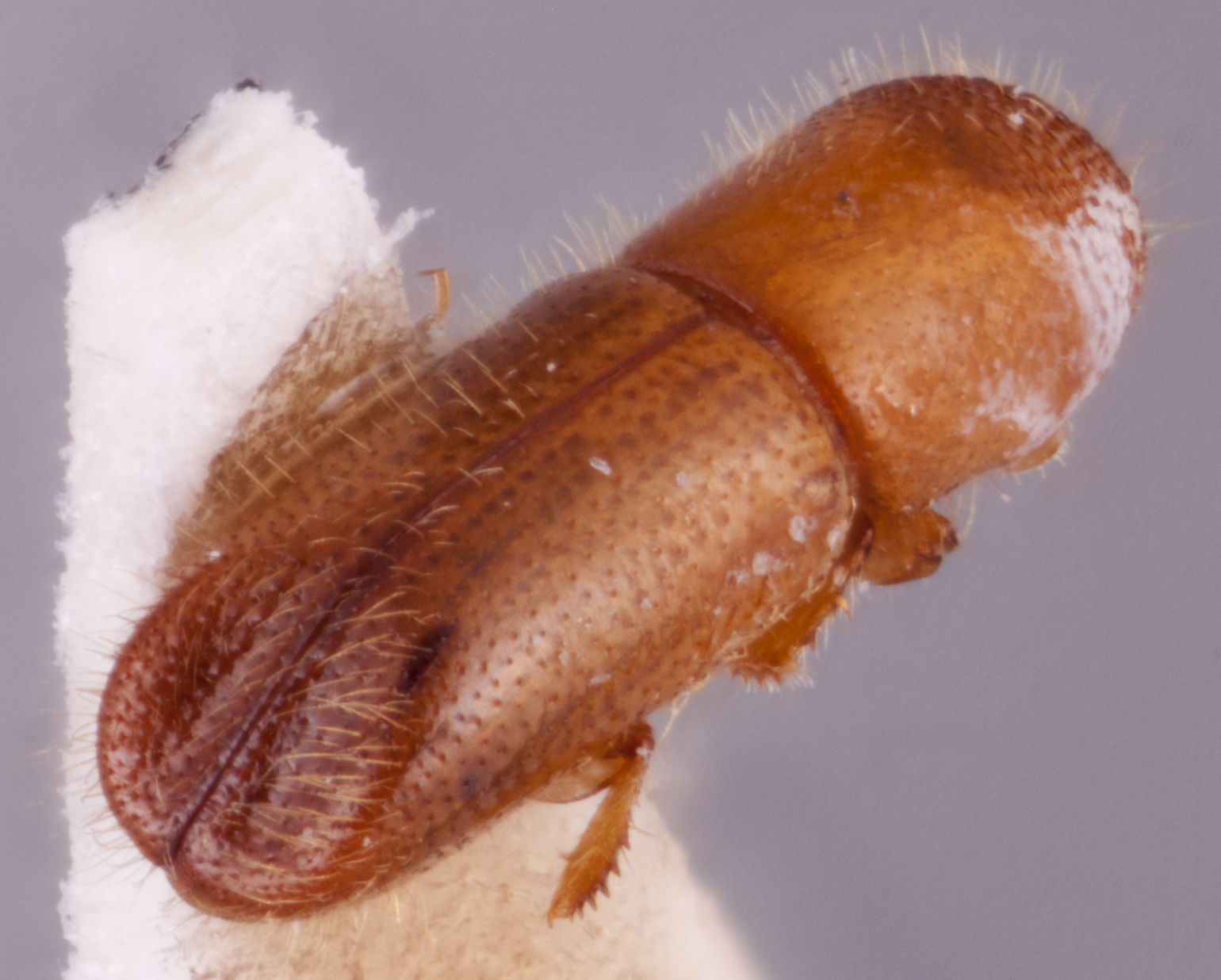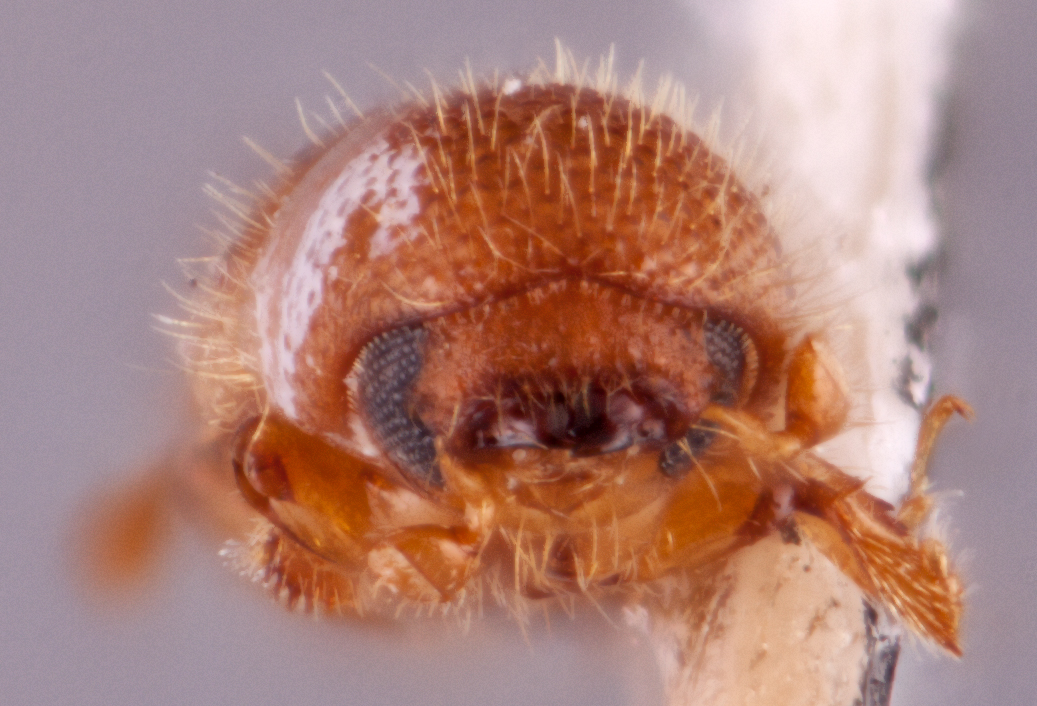Dryoxylon onoharaense
|
Dryoxylon onoharaense lateral; R.K. Osborn |
|
Dryoxylon onoharaense dorsal; R.K. Osborn |
|
Dryoxylon onoharaense declivity; R.K. Osborn |
|
Dryoxylon onoharaense frontal; R.K. Osborn |
Taxonomic history
Xyleborus onoharaensis Murayama, 1934: 293.
Dryoxylon onoharaense (Murayama): Bright and Rabaglia, 1999: 333.
Diagnosis
2.2−2.4 mm long (mean = 2.36 mm; n = 5); 3.14−3.43 times as long as wide. Like the genus, the species is most easily distinguished by the anterioranterior:
the front or forward; opposite of posterior margin of pronotumpronotum:
margin of pronotumpronotum:
the dorsal surface of the thorax
in laterallateral:
pertaining to the side
 view evenly arched, summitsummit:
view evenly arched, summitsummit:
highest point, used for pronotum and elytra, denotes the peak between pronotal frontal slope and disc, and between elytral disc and declivity not elevated or evident; anterioranterior:
not elevated or evident; anterioranterior:
the front or forward; opposite of posterior margin of pronotumpronotum:
margin of pronotumpronotum:
the dorsal surface of the thorax
weakly emarginated at middle; elytralelytral:
pertaining to the elytra
declivitydeclivity:
downward slope of either the pronotum or elytra
 distinctly moderately deeply sulcatesulcate:
distinctly moderately deeply sulcatesulcate:
deeply furrowed or grooved
; and declivitaldeclivital:
pertaining to the elytral declivity
face and laterallateral:
pertaining to the side
 margins unarmed. Unlike nearly all other Xyleborini, the submentum is not impressedimpressed:
margins unarmed. Unlike nearly all other Xyleborini, the submentum is not impressedimpressed:
a depression in a surface
 and there are comparatively fewer socketed denticlesdenticle:
and there are comparatively fewer socketed denticlesdenticle:
a small tooth, the sides of which are equal and the tip is above the middle of the base on the outer margin of the pro- (5), meso- (6), and metatibiae (5).
on the outer margin of the pro- (5), meso- (6), and metatibiae (5).
May be confused with
small Cyclorhipidion
Distribution
China (Guizhou, Sichuan), Japan, South Korea; introduced and established in USA and Italy (Rabaglia and Bright 1999, Gomez et al. 2018aGomez et al. 2018a:
Gomez DF, Rabaglia RJ, Fairbanks KEO, Hulcr J. 2018a. North American Xyleborini north of Mexico: a review and key to genera and species (Coleoptera, Curculionidae, Scolytinae). ZooKeys 768: 19-68. https://doi.org/10.3897/zookeys.768.24697, Marchioro et al. 2022Marchioro et al. 2022:
Marchioro M, Faccoli M, Dal Cortivo M, Branco M, Roques A, Garcia A, Ruzzier E. 2022. New species and new records of exotic Scolytinae (Coleoptera, Curculionidae) in Europe. Biodiversity Data Journal 10: e93995. https://doi.org/10.3897/BDJ.10.e93995)
Host plants
polyphagous; recorded from Abies (Pinaceae), Acer (Sapindaceae) (Bright and Rabaglia, 1999), Liriodendron tulipifera (Magnoliaceae) (Atkinson 2018), Populus (Salicaceae) (Coyle et al. 2005), Quercus (Fagaceae) (Murayama 1934Murayama 1934:
Murayama J. 1934. Notes on the Ipidae (Coleoptera) from Kiushu. Annotationes Zoologicae Japonenses 14: 287-300.)
Remarks
This species has been collected from both coniferous and angiosperm hosts.
DNA data
Sequences available for COI (from Jordal et al. 2000Jordal et al. 2000:
Jordal BH, Normark BB, Farrell BD. 2000. Evolutionary radiation of an inbreeding haplodiploid beetle lineage (Curculionidae, Scolytidae). Biological Journal of the Linnean Society 71: 483-499. https://doi.org/10.1111/j.1095-8312.2000.tb01270.x).
COI: AF187112.1





